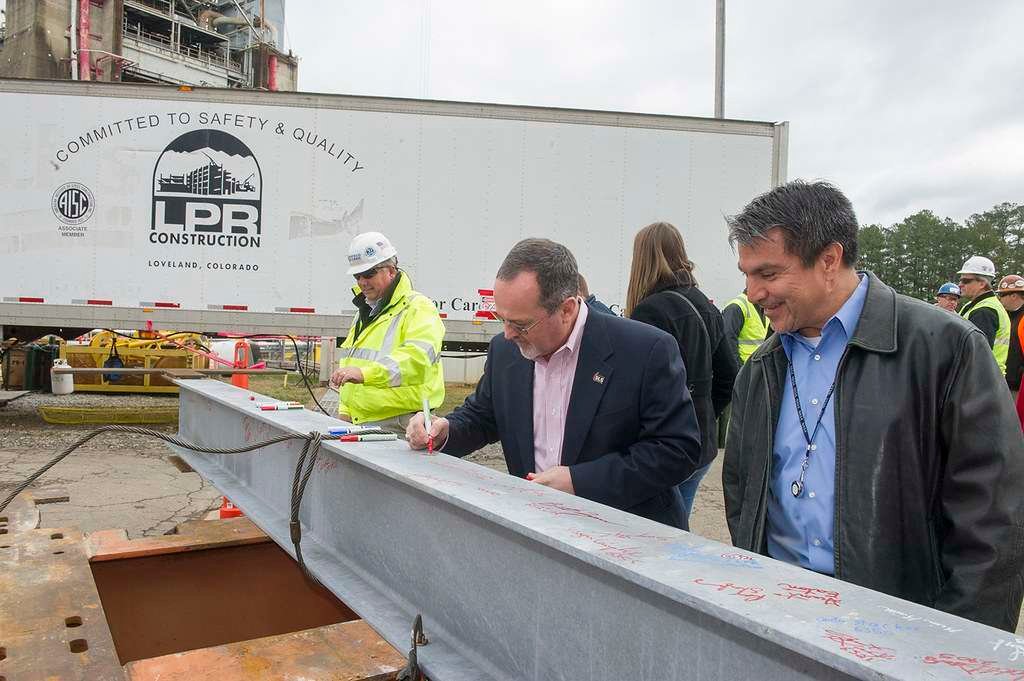Introduction
Defining an HSE Manager
An HSE (Health, Safety, and Environment) Manager is a dedicated professional responsible for implementing and maintaining the highest standards of safety, health, and environmental practices within an organization. They play a crucial role in ensuring the well-being of employees and mitigating potential risks associated with workplace hazards.
Importance of HSE in the Workplace
HSE is of paramount importance in any workplace. By prioritizing the health, safety, and environmental concerns of employees, organizations can create a culture where individuals feel valued and protected. Promoting a safe working environment not only enhances productivity but also reduces the likelihood of accidents, injuries, and legal liabilities.
Overview of Key Responsibilities
An HSE Manager shoulders a wide range of responsibilities to maintain and improve workplace safety. From establishing safety policies and procedures to conducting training programs, they are integral in creating a culture of safety and ensuring regulatory compliance.
HSE Manager Duties and Responsibilities

1.1 Establishing Safety Policies and Procedures
An HSE Manager is tasked with developing and implementing comprehensive safety policies that align with industry best practices. This involves conducting regular safety audits and risk assessments to identify potential hazards. By evaluating the risks associated with different work environments, they can tailor safety procedures to suit specific conditions, ensuring the well-being of all employees.
“The safety of employees is our top priority, and by establishing robust safety policies and procedures, we create a strong foundation for a secure work environment.”
1.2 Ensuring Regulatory Compliance
Staying up-to-date with local, national, and international safety regulations is a crucial aspect of an HSE Manager’s role. By actively monitoring changes in safety standards, they can establish measures to ensure regulatory compliance within the organization. This may include liaising with regulatory bodies and authorities to stay informed about new guidelines and implementing appropriate safety measures.
“Compliance with safety regulations is not just a legal requirement; it is a moral obligation we owe to our employees. By staying updated and collaborating with regulatory bodies, we can foster a safe working environment.”
1.3 Training and Education Programs
HSE Managers design and organize safety training initiatives to equip employees with the knowledge and skills necessary to identify and respond to potential hazards. These programs encompass a range of topics, including emergency response procedures, prevention measures, and the proper use of personal protective equipment. Regular communication and safety campaigns are used to promote a culture of safety throughout the organization.
“Effective training and education programs not only empower employees to protect themselves but also contribute to a sustainable safety culture within our organization.”
1.4 Incident Investigation and Reporting
In the unfortunate event of a workplace incident, an HSE Manager plays a pivotal role in conducting thorough investigations. By analyzing the root causes of accidents, they can implement corrective actions to prevent similar incidents in the future. Incident data is compiled and analyzed to generate reports and recommendations, enabling the organization to continuously improve its safety practices.
“Investigating workplace incidents enables us to learn from mistakes and make proactive changes that ensure the safety and well-being of our employees.”
1.5 Continuous Improvement and Performance Monitoring
An effective HSE Manager continually monitors safety metrics and indicators to identify areas for improvement. By analyzing trends and engaging with employees at all levels, they can develop strategies to enhance safety practices and prevent workplace injuries and illnesses. A proactive approach is crucial in mitigating risks and maintaining a high standard of safety.
“Performance monitoring is not just about meeting standards; it is about continuously striving for excellence and fostering a safe working environment.”
Qualifications and Skills for an HSE Manager

2.1 Educational Requirements
HSE Managers typically possess an educational background relevant to occupational health and safety, such as a degree in Occupational Health and Safety, Environmental Science, or a related field. Additionally, certifications and accreditations, such as Certified Safety Professional (CSP) or Occupational Health and Safety Assessment Series (OHSAS), are commonly required or preferred.
“A solid educational foundation coupled with relevant certifications ensures that our HSE Managers are equipped with the knowledge and expertise necessary to navigate the complexities of workplace safety.”
2.2 Knowledge of Safety Regulations and Standards
Understanding local, national, and international safety guidelines is essential for any HSE Manager. They must be well-versed in the legal requirements specific to their industry and maintain familiarity with industry-specific safety regulations and standards. This comprehensive knowledge enables them to ensure compliance and make informed decisions regarding safety protocols.
“Our HSE Managers are experts in safety regulations and standards, enabling them to create an environment that is in full accordance with legal requirements and industry best practices.”
2.3 Strong Analytical and Problem-Solving Skills
Having strong analytical and problem-solving skills is crucial for an HSE Manager to identify safety trends, analyze complex data, and find effective solutions. They must be able to assess potential risks, evaluate safety practices, and implement improvements that address underlying issues.
“Analytical prowess and problem-solving skills form the backbone of our HSE Managers’ ability to mitigate risks and maintain a safe workplace.”
2.4 Effective Communication and Training Abilities
Clear and effective communication is vital for an HSE Manager to convey safety information to employees at all levels of the organization. They must be adept at delivering engaging and informative safety training sessions, ensuring that employees are equipped with the knowledge necessary to prioritize their well-being.
“Our HSE Managers excel at communication and training, ensuring that safety information is effectively disseminated and understood at every level of our organization.”
2.5 Leadership and Interpersonal Skills
HSE Managers must possess strong leadership skills to inspire and motivate employees towards safety excellence. Collaborating and working effectively with stakeholders, such as employees, management, and regulatory bodies, requires excellent interpersonal skills. By fostering collaboration and teamwork, HSE Managers can create a unified approach to safety.
“Leadership and interpersonal skills are at the core of our HSE Managers’ ability to establish a culture of safety and facilitate a collaborative environment.”
Challenges Faced by HSE Managers

3.1 Balancing Safety and Productivity
Finding the delicate balance between safety protocols and operational efficiency can be a challenge for HSE Managers. Striking a balance that ensures employee well-being without hindering productivity is crucial. Resistance to safety measures may arise from employees or management, requiring effective communication and persuasion to bridge the gap.
“Balancing safety and productivity is a constant challenge, but by fostering open dialogue and emphasizing the value of employee well-being, we can create a harmonious workplace.”
3.2 Evolving Regulations and Compliance
Safety regulations are constantly evolving, necessitating the HSE Manager’s continuous dedication to staying updated with the latest standards. Ensuring compliance with new regulations can pose unique challenges, as the organization may need to adapt existing practices or implement new protocols to meet changing requirements.
“Keeping pace with evolving regulations is a Herculean task, but our HSE Managers rise to the challenge, adapting our safety practices to align with the latest standards.”
3.3 Managing Change in the Workplace
Introducing new safety measures and protocols requires effective change management. Resistance to change from employees and management can pose challenges, hindering the implementation of new safety initiatives. HSE Managers must employ strategies to address resistance, such as providing education, transparent communication, and addressing concerns.
“Change management is a delicate process, and our HSE Managers take a proactive approach to address resistance and ensure the smooth implementation of new safety measures.”
3.4 Keeping Up with Technological Advancements
Integrating technology into safety management systems can be challenging for HSE Managers. Identifying and adopting new tools that enhance safety practices requires ongoing research and evaluation. Embracing technological advancements enables HSE Managers to elevate safety standards and ensure the organization remains at the forefront of safety innovation.
“Technological advancements are revolutionizing workplace safety, and our HSE Managers are at the forefront, exploring new tools to bolster our safety practices.”
3.5 Cultivating a Safety Culture
Developing and nurturing a safety culture is a perpetual challenge for HSE Managers. Promoting employee commitment to safety and fostering accountability throughout the organization requires persistent effort. By creating an environment where safety is a top priority at all levels, HSE Managers can establish a sustainable safety culture.
“Creating a safety culture is an ongoing journey, and our HSE Managers are dedicated to fostering an environment where safety is ingrained in our organizational DNA.”
Conclusion
In conclusion, the role of an HSE Manager is multifaceted and critical in maintaining safety in the workplace. With their comprehensive knowledge, skills, and dedication to continuous improvement, HSE Managers play a pivotal role in mitigating risks, ensuring regulatory compliance, and fostering a culture of safety. By prioritizing the well-being of employees and recognizing the value of HSE professionals, organizations can create a safe and productive work environment.
Frequently Asked Questions (FAQs)
What does HSE stand for?
HSE stands for Health, Safety, and Environment. HSE Managers focus on maintaining health, safety, and environmental practices within an organization.
Is an HSE manager the same as a safety officer?
While both positions focus on ensuring workplace safety, an HSE Manager typically has a broader scope, encompassing overall health, safety, and environmental concerns. A safety officer may have a narrower focus on specific safety protocols and compliance.
What are some common safety certifications for HSE managers?
Common safety certifications for HSE Managers include Certified Safety Professional (CSP), Occupational Health and Safety Assessment Series (OHSAS), and Certified Industrial Hygienist (CIH).
How does an HSE manager support incident prevention?
HSE Managers support incident prevention by conducting thorough investigations, implementing corrective actions, analyzing incident data, and continuously monitoring safety metrics to identify areas for improvement.
How can an organization promote a strong safety culture?
To promote a strong safety culture, organizations should prioritize safety at all levels, regularly communicate safety expectations, provide ongoing training, encourage employee involvement in safety initiatives, and foster a culture of accountability and continuous improvement.
Remember, the safety and well-being of employees should always be the top priority in any workplace. By recognizing the importance of HSE Managers and their contributions, organizations can create environments where individuals thrive, and accidents are minimized.












I am SAFETY officer
Yes We are Safety Officers
Proud To be Safety Officer